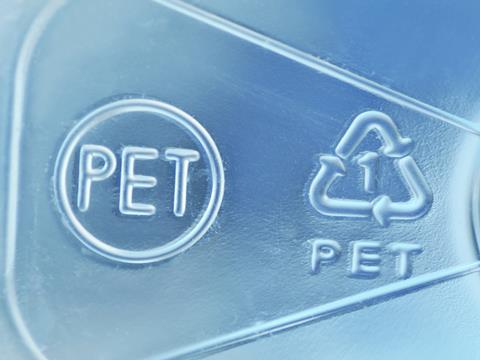
Scientists from Leipzig University recently discovered an enzyme that they say can degrade PET in record time, via a process known as biological recycling. Within 16 hours, the enzyme reportedly causes PET to decompose by 90%. What is the true potential of this solution, how can it be scaled, and how could it fit in with existing recycling methods? The leader of the project, Dr Christian Sonnendecker, tells us more.
To start us off, could you introduce the solution to our readers, explain what it is, and tell us (in layman’s terms) how it actually works?
The building blocks of PET are connected via ester bonds, which can be cleaved by a hydrolysis reaction. However, a high energy barrier prevents hydrolysis under ambient conditions. Enzymes are biocatalysts, which means they can reduce the activation energy and thus represent an alternative to breaking down PET into its monomers under rather mild reaction conditions.
Several polyester-degrading enzymes are already known and have been characterized. Only a few candidates show sufficiently high activity to completely degrade thermoform PET packaging within a reasonable time. We isolated a further promising and highly active enzyme, designated PHL7.
I imagine that the R&D process behind the solution was fairly extensive. Could you give us some insights into how this method came about? How was the project funded?
Prof. Dr. Zimmermann is one of the pioneers in this research area. In the last 20 years, his research group developed polyester hydrolases for applications in the textile and laundry industry and more recently their use in plastic waste recycling processes. Projects were funded by national sources (BMBF, DBU) and the EU (P4SB, MIPLACE).
We are presently looking for thermostable enzymes and a compost heap provides both a high temperature as well as decomposed plant matter to host suitable microbes. By extracting the DNA from an environmental sample, we can specifically look for the desired genes and fish them out.
In your view, where does this solution fit in alongside existing plastic waste streams, like mechanical and chemical recycling?
Enzymatic recycling is similar to chemical recycling, just using a biocatalyst. It is still not clear if the process can be run economically compared to the established recycling methods. However, a low energy consumption, high selectivity, and the possibility to engineer the biocatalyst further make the enzymatic approach a promising option for tertiary PET recycling.
Mechanical recycling is a downcycling process since the product quality is reduced with each cycle. Chemical and enzymatic recycling have the advantage to close the plastic production cycle by recovering the monomers which can be used for synthesis again thereby becoming independent on fossil resources.
However, chemical recycling is energy-intensive and requires large volumes of waste streams to operate economically while biocatalytic recycling can be scaled for specific applications and requires very small energy input.
A few innovations like this have been in the news recently – why haven’t they been scaled yet? What are the challenges around this?
The research area has made huge progress within the last 15 years, coming from weeks to days and now already to hours to completely degrade typical PET packaging waste materials. Carbios, a French company, has already a pilot-plant running to evaluate the process at a larger scale, but it appears that the process is still not economic. A huge challenge is that the enzymes can only degrade amorphous PET like thermoform containers, while biaxially stretched PET (e.g. beverage bottles) cannot be directly degraded by the enzyme. Here, Carbios is using an energy-intense pretreatment.
On that note, how is your organisation going about scaling your particular method?
We recently scaled the process up to a 1-litre system. Here, we have already learned a lot that will guide us in future reactor designs. We are also working with industry partners within the EU project ENZYCLE to further develop the recycling process.
What does the future hold for this innovation and biological recycling in general?
Regarding biological recycling, we are presently limited to polyester-based plastics such as PET as suitable substrates. No enzymatic process is available for the recycling of more recalcitrant plastics such as polyethylene or polystyrene which form a considerable part of the global plastic waste.
Biocatalytic recycling of post-consumer PET may well find applications for the recycling of “difficult” plastic waste, for example multi-layer food packaging which cannot be processed by other methods and is currently burned or ends up in the environment.












No comments yet